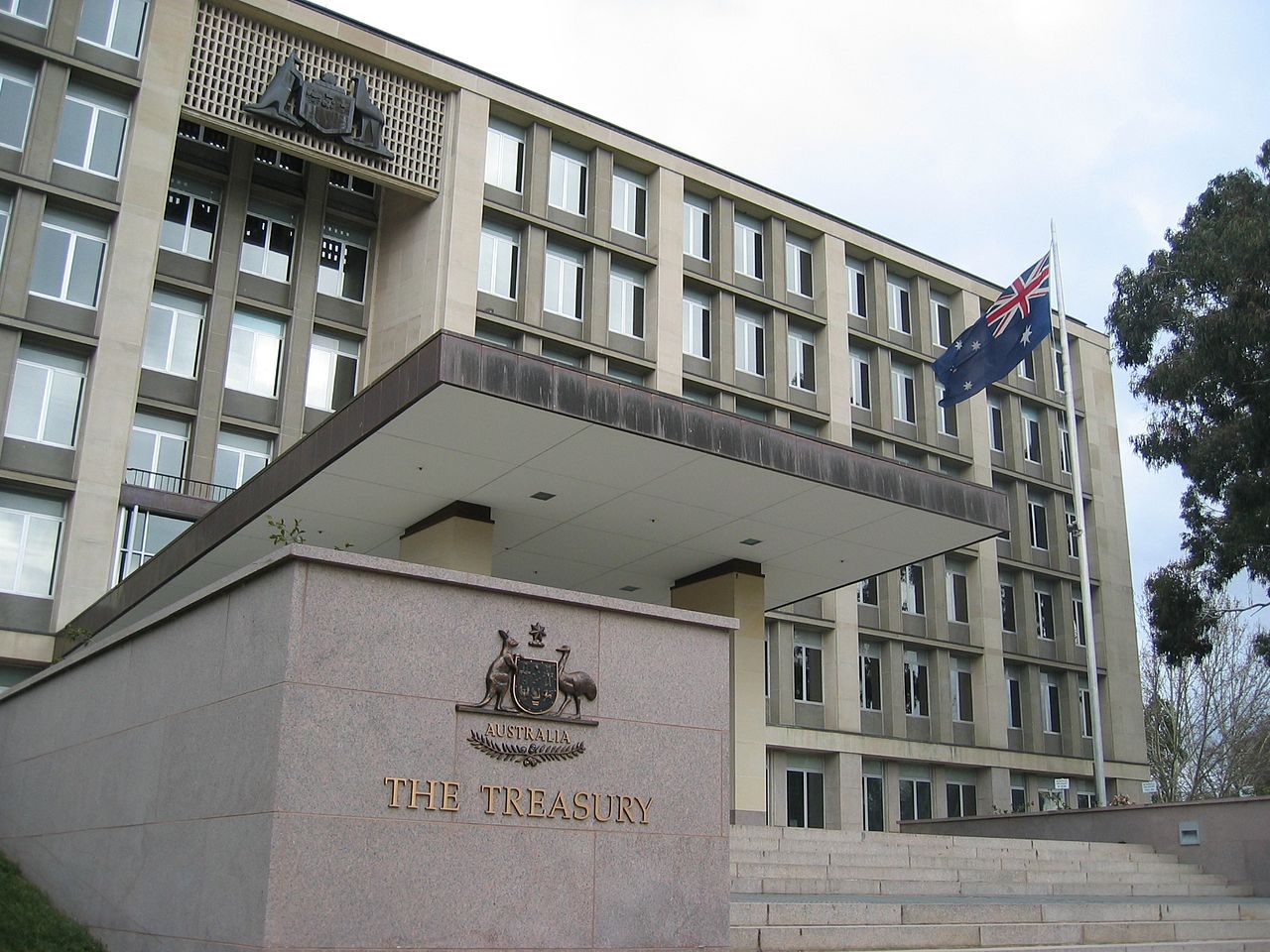Treasury is one of Australia’s great enduring institutions, having survived, largely intact, since Federation. For most of its history, Treasury has provided governments with rigorous, impartial policy advice framed to support the long-term growth potential of the Australian economy. At its best, Treasury has been a reformist agency that has supported and pushed governments in policy reform partnerships. At other times, Treasury has played a crucial conservative role in mounting arguments against economically harmful policies.
If there has been a central defining culture in Treasury, it has been around analytical excellence – having the strongest policy framework and the best economic ideas. If there has been one recurring constraint on Treasury’s policy effectiveness, it has been being too narrow in its focus and closed to alternative perspectives.
Like any organisation, though, Treasury has changed over time. It has sought to adapt to the environment it has found itself in, both in terms of the government of the day and the economy and society more broadly. Mostly, Treasury has been able to provide sustained, consistent, robust policy advice. While different other agencies have come to the fore at times, they have not been able to maintain as consistent, or as strong, a policy framework as Treasury. The issue for Treasury has been that its influence has waxed and waned over time.
From book-keeper to economic policy maker
For its first 30 years, Treasury’s primary role was as budget manager and administrator, with only a limited policy role. In that time Treasury was, however, instrumental in establishing the new Commonwealth government’s institutional infrastructure – such as the Audit Office, the Bureau of Census and Statistics, the age pension, the currency, the Tax Office, the Commonwealth Bank and the issuance of government bonds.
Found wanting as an economic policy adviser in the Great Depression, after the Second World War, Treasury set about developing economic policy capacity, culminating in the appointment of Sir Roland Wilson as secretary in 1951.
Through the golden years of macroeconomic and budget management of the 1950s and 60s, Treasury was influential. While not actively Keynesian itself, with its neo-classical economic framework emphasising the long-run growth potential of the economy over short term macroeconomic management, Treasury’s economic and budget roles meant it was an implementer of such policies to the extent they were practiced.
Waxing and waning influence from the 1960s to 1980s
Treasury’s influence waned somewhat from the late 1960s to the early 1980s. The stagflationary conditions of the late 1960s and 70s overlaid with the political upheaval associated with the reformist Whitlam government, made for a difficult economic policy advising environment. Treasury maintained a strong economic framework and was certainly frank and fearless in its advice – but was seen as dogmatic by the increasingly assertive governments of the post-Menzies era and was pushed out into the cold. By the time Malcolm Fraser split Treasury into two agencies (Treasury and Finance) in 1976, the arguments about Treasury’s excessive power and arrogance were well worn.
Treasury’s influence waxed again through the nation-changing economic reforms of the 1980s and 1990s. Treasury was able to support reformist Treasurers in Keating and Costello as they pursued a series of major economic reforms. Through reforms of the financial sector, the tax system, competition policy, tariffs and workplace relations, Treasury played a key role in designing and helping to sell and implement these reforms. This was a golden age for economic reform that set Australia up for the 28 years of continuous economic growth that have followed. There was a policy partnership between an activist Treasury and strong Treasurers.
Recent years: Treasury under strain
The experiences of the early 21st century have proven more difficult. Paradoxically, the resources boom with its burgeoning revenues made it harder to make the case for economic reform – there was no burning bridge. Then as the political scene deteriorated, especially from the 2010 hung parliament, governments lacked the political capital needed to pursue long-term reform programs. Economic reforms that are beneficial for society as a whole inevitably have winners and losers in the short term and governments need political capital to carry the day.
The deteriorating political scene has impacted adversely on the public service generally and Treasury has at times struggled to define its role. In the relentless push for message over substance that has characterised governments fighting for their political survival over the last decade, it has been facts and figures, not policy advice, that have been demanded. In that process, Treasury has been dragged into the daily political and media battles as the provider of budget and economic facts and figures.
In that fraught political environment, on contentious issues Treasury allowed itself to be partly manoeuvred away from its formal policy advising role. Written policy advice was often replaced by information briefs, with the ministers’ offices were then in the position to put their, politically-attuned, policy advice over the top of the Treasury information brief. Treasury had accepted this more subservient role in the name of being seen to be more responsive to ministers’ perceived needs.
The previous model of the department having some separation from the raw politics of government to enable it to take the lead on the policy development and advice had partially broken down with the ministers’ offices and external stakeholders increasingly filling this space. The balance of policy influence had shifted and the previous boundary between public service department and ministerial office become more blurred.
The ramifications for Treasury, as for elsewhere in the public service, of this sustained period of political breakdown across governments were profound. Agencies such as Treasury were losing their influence as policy advisers, even their roles as such, as the balance of power shifted decisively to the ministers’ office. The whole policy development process was in bad shape. Treasury’s influence has waned.
Treasury’s changing fortunes
Within the context of a shifting political environment, there are two broad sets of reasons for Treasury’s changing fortunes.
First, Treasury’s own ambition for reform has varied. At times, Treasury has been an ambitious partner in reform, most notably through the 1980s and 1990s. When Treasury’s conservative instincts have dominated, that has militated against it being such an agent for reform.
Second, the role of other advisers has varied. At times, Treasury has been a dominant provider of economic advice to governments, such as in the golden years of the 1950s and early 1960s. In recent times, influence has drifted away from the public service, with ministers’ offices and external bodies becoming more prominent players.
Throughout its history, though, Treasury has managed to evolve, seeking to maintain its position as a central adviser to governments. That evolution will need to continue if Treasury is to regain its position of influence.
A challenge for Treasury (and other public service agencies) is how to maintain its capabilities. With Treasury’s economic policy advising capacities being less called upon, they are in danger of withering on the vine. In the raw politics of the last decade, the skill set in demand has been can-do responsiveness to quickly provide facts and figures for the daily political and media skirmishes. As the more senior and experienced staff with substantial policy advising experience leave, there is a diminishing pool of people for more junior staff to learn from.
For the sake of good policy development in Australia, hopefully the political scene will stabilise and government will have the scope to again pursue a substantial economic reform agenda. Treasury needs to be ready, if and when that opportunity presents itself. To be prepared for its influence to wax again.
This article is based on Paul Tilley’s book, Changing Fortunes: A History of the Australian Treasury, published by Melbourne University Press in 2019.





Paul, In the 1950’s public servants like Nugget Coombs had credibility, Why? Because they understood what was happening in the real world. Unfortunately that changed from the late 1960’s until today. The economists who were and are chosen to work in State and Federal Treasuries all come out of universities that teach Economics that is based on erroneous theories and mathematised models that are only poor approximations to reality. The way Economics is taught and the content matter must change or we will continue to have GFC’s and Treasury economists won’t have a clue how they happened and how to prevent them. Here in Australia organisations like Rethinking Economics, Economics Reform Australia and the Modern Money Network are attempting to bring about change and we would welcome people like yourself to join us in getting the job done.
Regards
Wayne McMillan